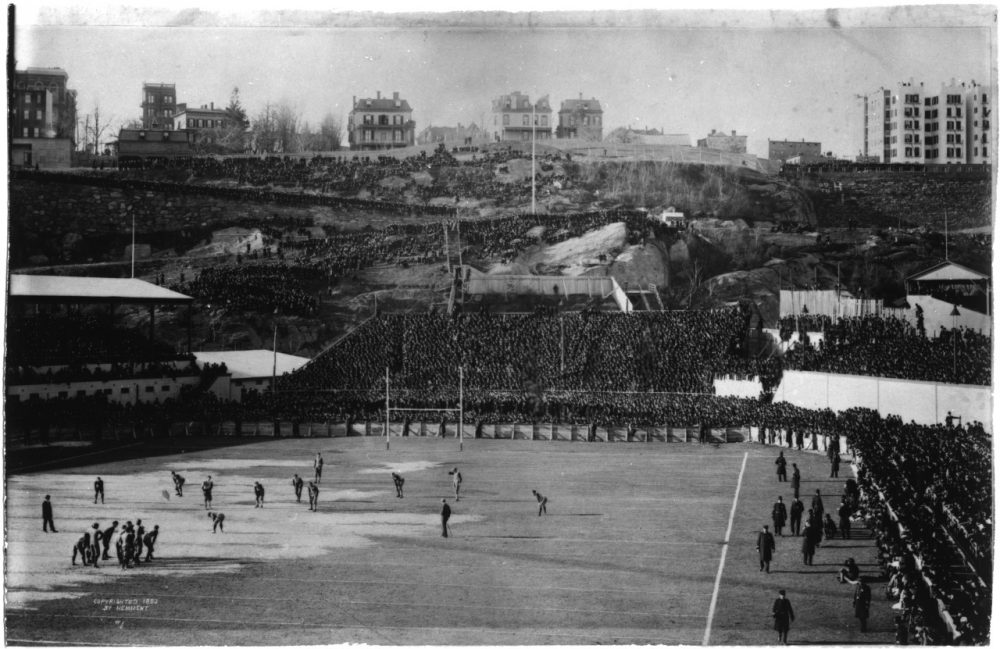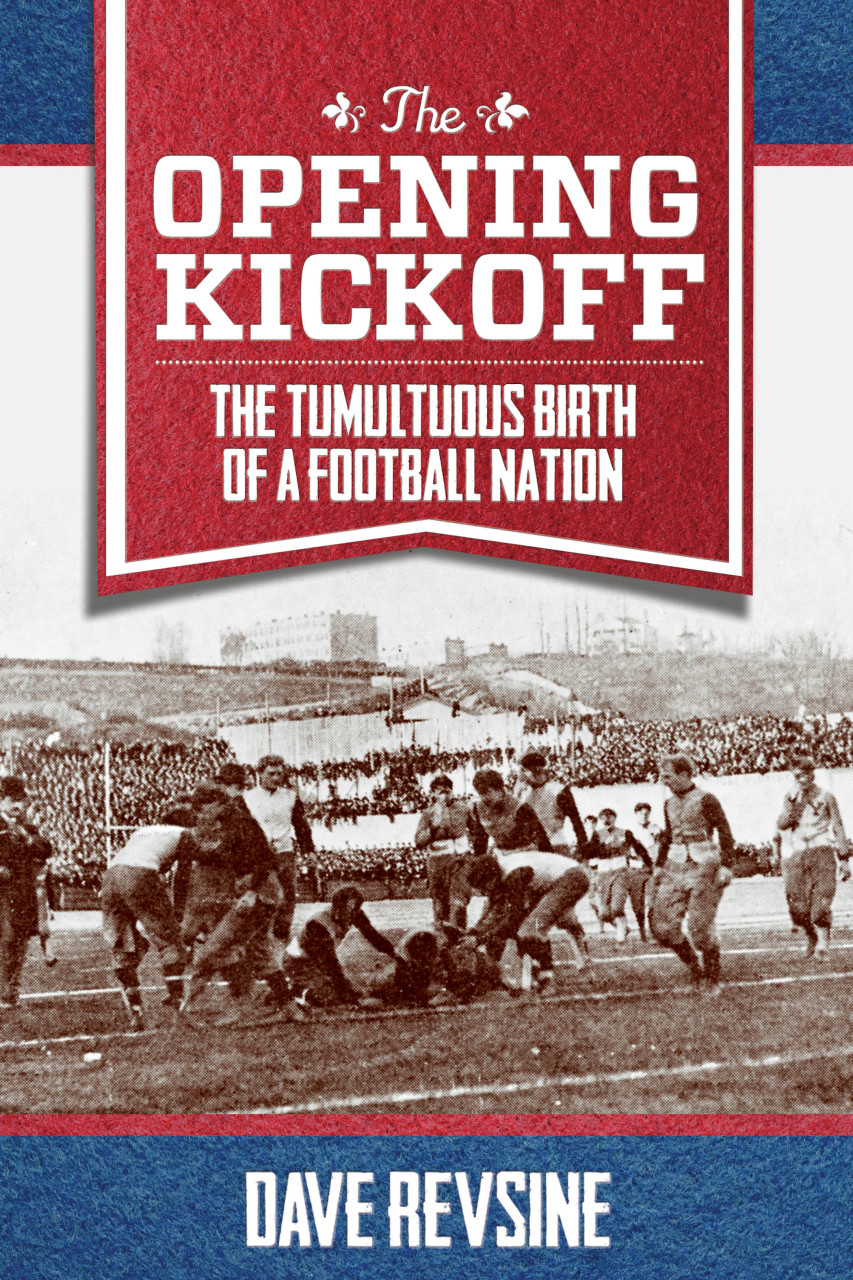Advertisement
'The Opening Kickoff' Reveals Parallels Between Football's Early Years And Today
Resume
Lots of the stories coming out of contemporary football are decidedly grim: players have endured brain injuries and they’ve been medicated so they could play when they shouldn’t have been playing; Notre Dame is only the most recent big-time college program where suspicions of academic impropriety have surfaced.
But according to Big Ten Network anchor Dave Revsine, whose new book is titled The Opening Kickoff: The Tumultuous Birth of a Football Nation, there is precedent for these stories. Revsine argues that most of the controversial issues in today's game were also present in football's formative years between 1890 and 1915.
Revsine joined Bil Littlefield on Only A Game.
Highlights From Bill's Conversation With Dave Revsine
BL: During the 1890s, Heavyweight Boxing Champion John L. Sullivan witnessed a game between Yale and Harvard. His comment on the action is perhaps worth recalling.
 DR: Yeah, he ran into Paul Dashiell, who was a well-known official of the game. They were in a restroom on a train and Dashiell asked him what he thought of the game.
DR: Yeah, he ran into Paul Dashiell, who was a well-known official of the game. They were in a restroom on a train and Dashiell asked him what he thought of the game.And Sullivan lowered his voice to a whisper and said, "There's murder in that game."
BL: (Laughing) This is the heavyweight champion of the world!
DR: Exactly. I mean, it points out just how violent the sport was. I think to a lot of people it just seemed like it was almost violence for violence's sake. And it really was in a crisis.
BL: In football’s formative years, players were regularly compensated for their efforts. What were some of the more creative ways colleges and universities did that?
DR: You had, literally, people going on streetcars and offering people a wage to play for a day. You had very famous cases of players going from school to school. They were called "tramp athletes." For instance, Fielding Yost, who went on to great fame as the head coach of Michigan. Yost was playing at West Virginia and went to play one game for Lafayette. They pulled a huge upset over Penn. He played that game and a week later he was back on campus at West Virginia playing for them.
I talk about the Michigan team in 1893. Seven of their 11 players weren't enrolled in school, weren't students at the University of Michigan. And yet people didn't find that to be strange because part of what they were trying to figure out in this time period was, "Well, who should be able to represent these schools?"
BL: I also like the idea that some of the early stars, if they weren't paid directly with cash, they were told, "Well, you can have all the money that we make selling tobacco."
[sidebar title="The O'Bannon Decision" width="330" align="right"] We examine what the ruling may or may not mean for the future of college sports. [/sidebar]DR: You think about the O'Bannon case, which was such a huge issue and still is, right, about your name, image and likeness. I mean, there was a guy who played at Yale, James Hogan, who had a deal with the American Tobacco Company. They sold cigarettes on campus with his name attached to them and he got a percentage of the sales in New Haven, [Conn.].
And again, the parallels are just stunning. Everything we're going through now in this sport, the beginnings of it could be seen in this prior time period.
Bill's Thoughts On 'The Opening Kickoff'
The early days of college football featured fatal injuries and calls for the elimination of the sport from as far south as Georgia. Lots of college coaches cared not a whit if their players attended class.
[sidebar title="An Excerpt From 'The Opening Kickoff'" width="330" align="right"]Read about the Thankgiving Day Game between Yale and Princeton in 1893 in an excerpt from Dave Revsine's The Opening Kickoff: The Tumultuous Birth of a Football Nation.[/sidebar]The so-called "tramp athlete" sold his talents to whatever institution of higher learning needed him on a particular fall day. After the game, he got on the train for home or for the next college town where there might be a very temporary roster spot. He did not stop off at the library any more than he passed "Go," though he probably did collect $200,= or at the very least the odd fin.
Players were sometimes advised to identify the other side's most effective weapon early, then break his leg. Or his arm. Or his collarbone. Whatever they could reach.
When I spoke with Dave Revsine, the author of The Opening Kickoff, he kept circling back to the contention that there is nothing new in the various excesses and violations evident in college football today. There is precedent in the early 1900s for all that is bad in the game today. But he suggests that in the game's early days, there is also precedent for all that is good about college football, and he celebrates the excitement that attended games involving Yale, Princeton or Harvard when they were among the giants of the college football world.
This segment aired on August 23, 2014.